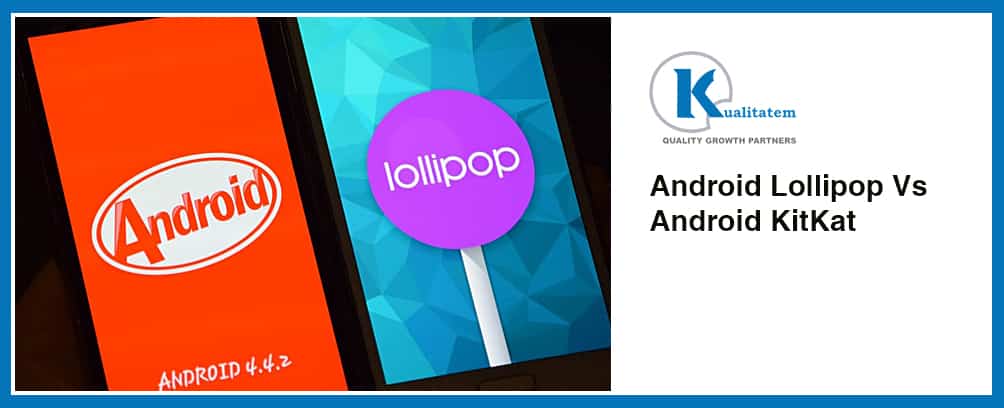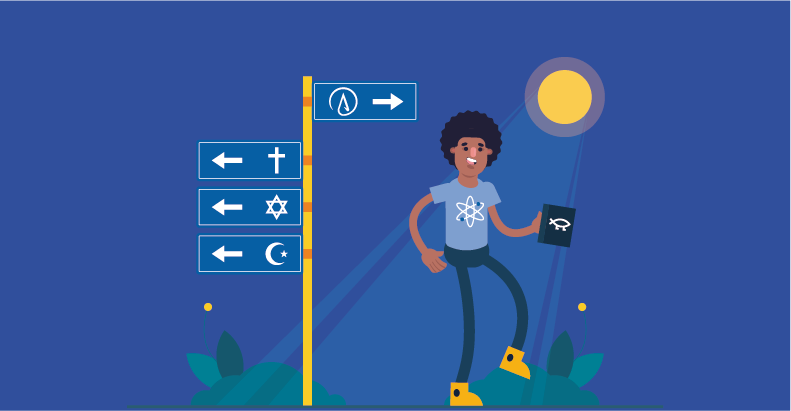Android Lollipop Vs. Android KitKat

- April 13, 2015
- admin
Each Android OS release brings something new with itself and Google’s latest Android OS release ‘Lollipop’ was no different. Google’s new Android 5.0 Lollipop OS delivers a number of new features including material design and certain performance & speed improvements etc. Many issues that prevailed in previous versions (e.g. video playback issues, password failures & battery consumption issues etc) were fixed in this OS.
Let’s have a look at some of the new features (both major and minor) of Android Lollipop OS.
*The following comparison between KitKat and Lollipop OS versions has been done keeping in view the Nexus 5 device.
Comparison between Android Lollipop vs. Android 4.4 KitKat:
Lock Screen
The lollipop lock screen is slightly different from KitKat as the lollipop lock screen has additional features as compared to KitKat. You need the swipe gesture to unlock the phone, on the left corner, camera option is given and on the right corner, the dialer is given adding to more easiness. Dialer option wasn’t provided in the previous version of KitKat.
Performance
Google has switched to ART (Android runtime) from the Dalvik which the Google says is twice as fast. The smoothness on Nexus 5 is great. Such phones will have more RAM as compared to existing phones with KitKat OS, which is a huge advantage that only future generations of Lollipop handheld devices will be able to take benefit of. Multitasking has also been updated allowing the user to open multiple cards for the same apps.
Connectivity and APIs
Google also wants Lollipop’s apps to communicate and link with one another in a more efficient way as compared to its previous OS ‘KitKat’. For example if the user taps on any link in Chrome then it should open in specific apps instead of taking him/her to mobile websites. To some extent, the Lollipop OS already provides this feature however more consistency is needed.
This is all on the app developers who basically take advantage of 5,000 new APIs of Lollipop OS. Though their presence might not be noticeable by the end users at first but they will definitely make the new Android OS better with the passage of time.
Flashlight
One of the major concerns of the KitKat users was that they had to download a third party app for the flashlight. The Lollipop users have been benefitted as they no longer have to download any third party flashlight app as they can now use the LED flash alongside with the camera as flashlight. The user simply needs to pull down the notification bar & then tap on top of the bar to reveal the flashlight app besides other options.
Design
Android Lollipop brings more insight into the operating system’s appearance affecting certain areas such as the look and feel, animations and effects and the size of icons etc. Everything is easier to understand, and extremely smooth enough. The design in Lollipop is more layered and most of the users have claimed that KitKat is a big flat in designs against Lollipop.
Guest User
Many people use each other’s mobile phones which could be a big problem for many users. Lollipop OS gives such users this flexibility that they can add a guest from phone settings i.e. Go to Settings > Users > Add Guest. In such case, the guest user will not be able to access any of the other user’s stuff.
Soft Key Redesign
Another minor change is of the soft key buttons which is an amazing change. The icons are smaller than before. In Nexus 5 device, the buttons shapes have been changed and they seem more compact. They are now a triangle, circle and square in the back, home and recent apps.
In the light of above discussion we can conclude that, Lollipop OS shows a lot of improvements and changes, some of which might not be that much significant, but they definitely help to provide better user experience as compared to the KitKat OS. Using an Android phone that is equipped with Lollipop OS is a much more interesting and fun experience. Being a user, what do you think of Lollipop OS? Do share your feedback.











